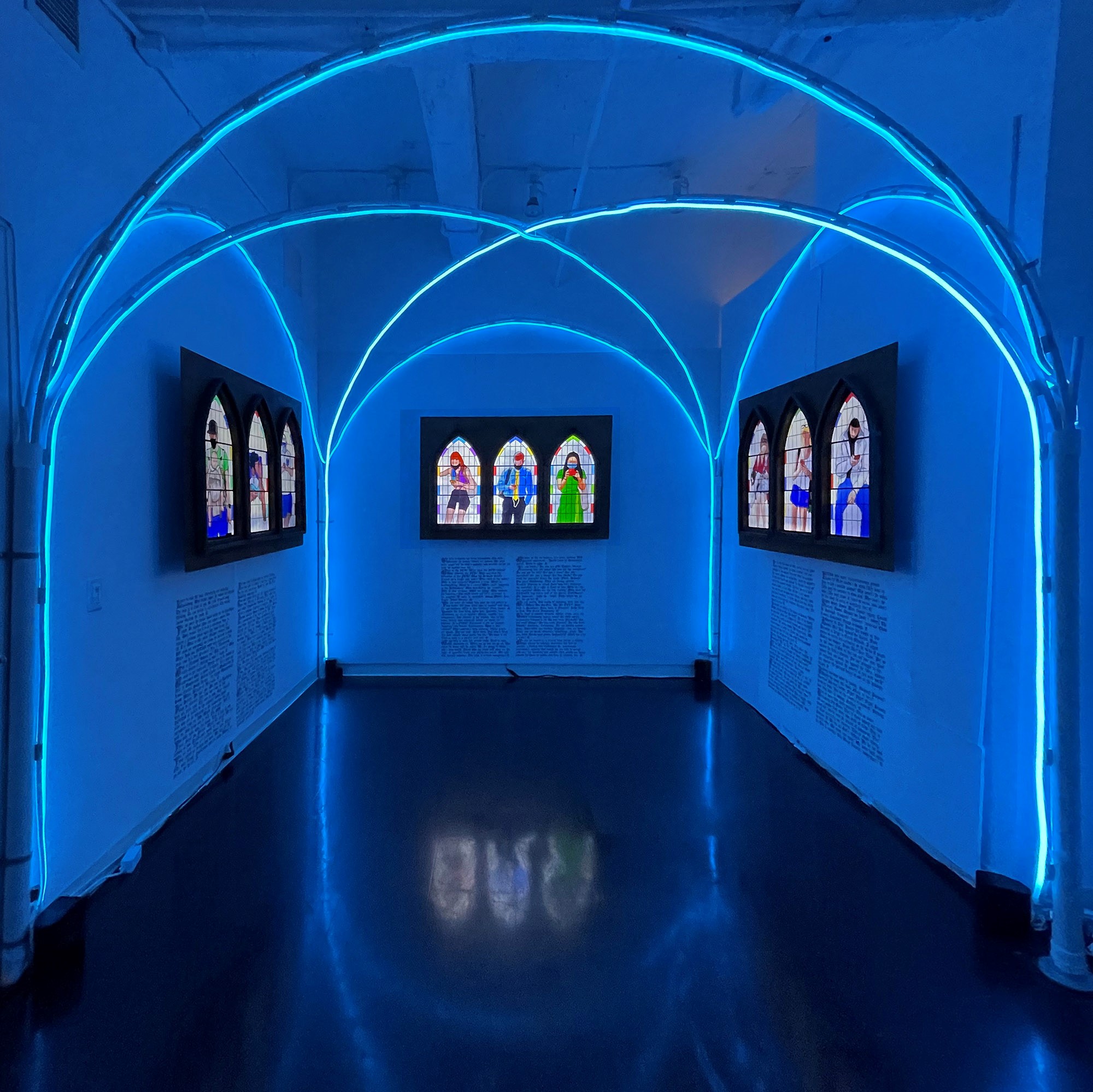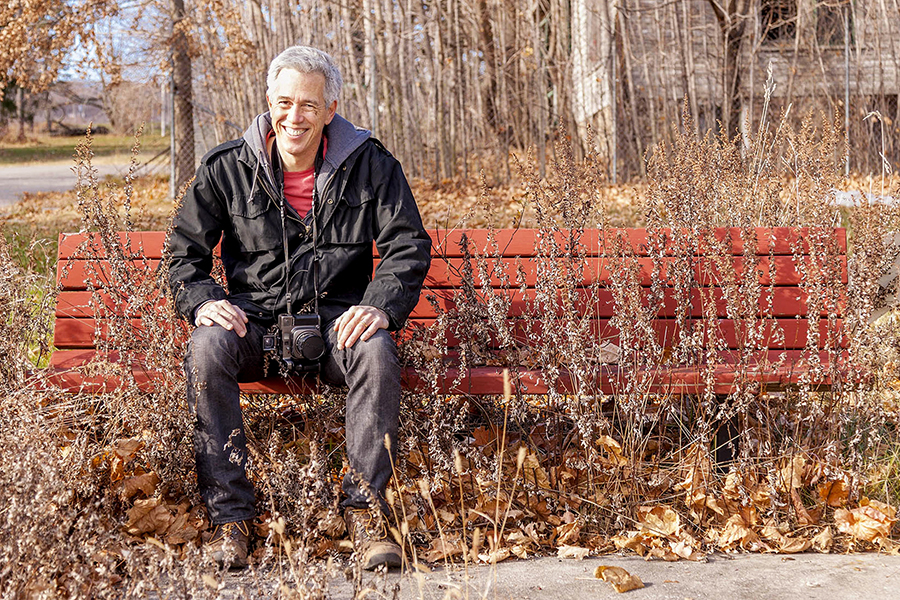
Right Brain, Left Brain
By day, CMU alumnus harnesses data and statistics to lead global brands, and by night, he creates art that envelopes and educates
By Amanda S.F. Hartle
Ellis Island of the 1960s prior to its restoration.
The smoking shell of Tulsa’s Black Wall Street 100 years ago.
An endless sea of white tombstones at Arlington National Cemetery in 2016.
Carnegie Mellon University alumnus Phil Buehler’s immersive photography may be the closest any of us come to using a time machine.
“The large, walk-in cycloramas I’ve created of culturally relevant places allow me to almost transport people to a place they might never visit and raise questions in their minds like were raised in mine,” says Phil, a 1980 CMU graduate who uses his MBA from the Tepper School of Business as director of Bloomberg Media’s global brand valuation studies.
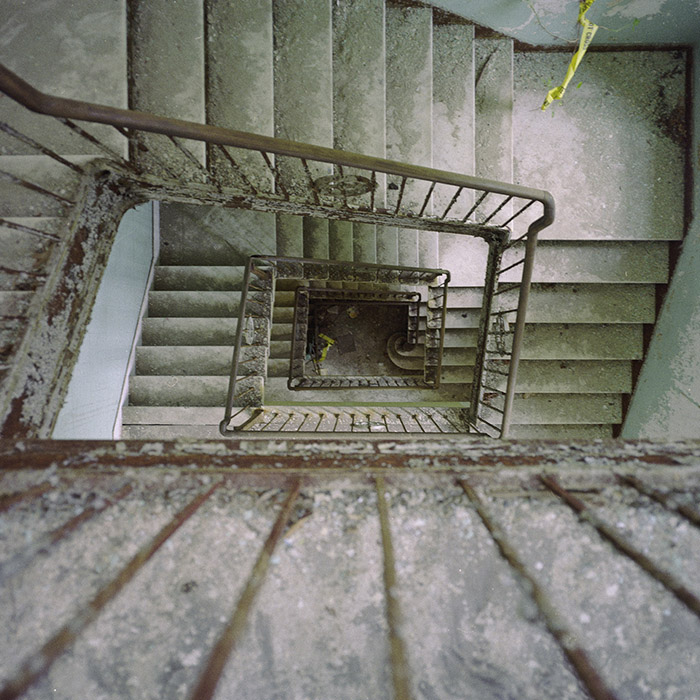
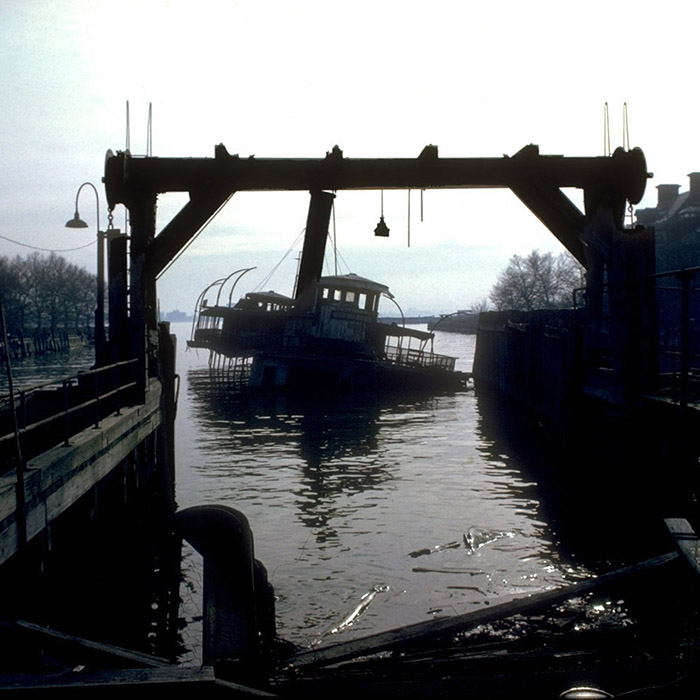
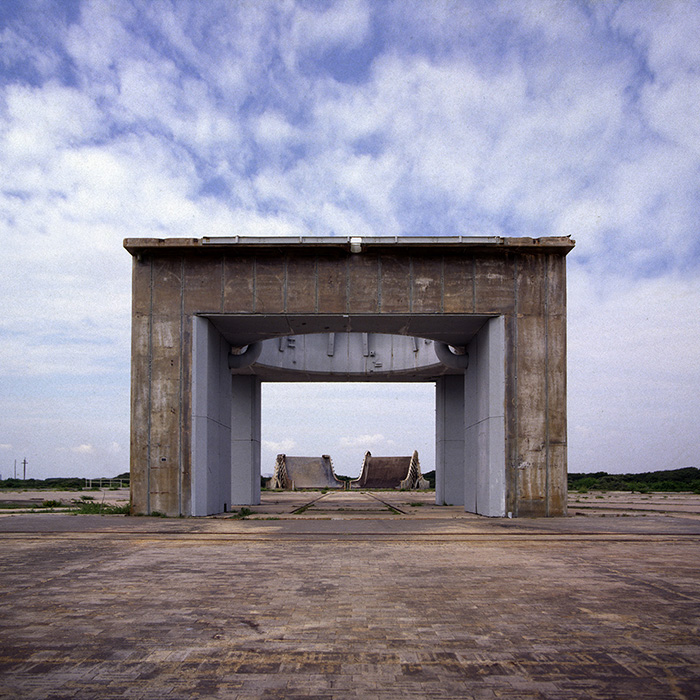
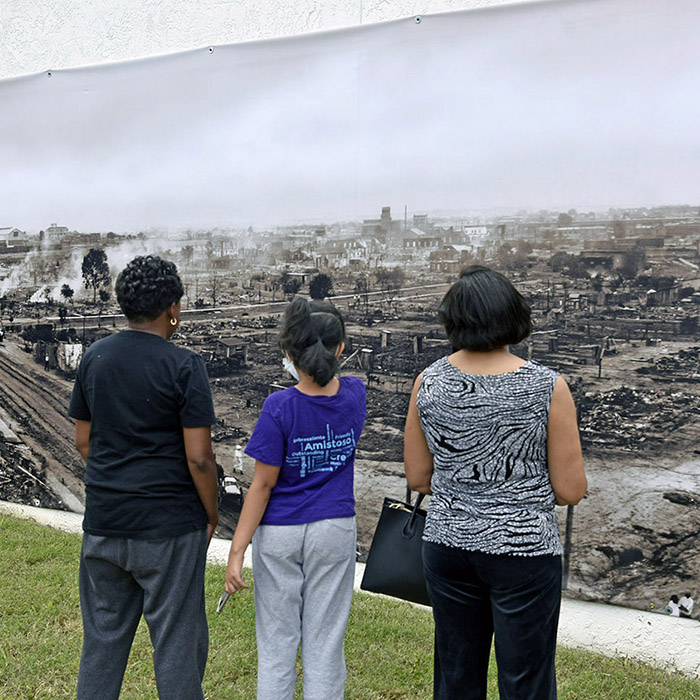
A Pioneering Spirit
Phil’s family moved across the Hudson River from New York City’s South Bronx to New Jersey when he was age 8.
Throughout the ‘60s and ‘70s, families like his were heading to suburban areas as the United States transformed, leaving behind empty shells of neighborhoods and industrial areas — modern ruins. Phil and his friends started exploring them by taking buses, trains and subways for hours and crisscrossing the region.
“It was the closest we’d come to the frontier,” Phil says. “These were places where there were no authorities, but they were full of history.”
With no internet, Google Earth or cell phones, Phil turned to maps and guesswork. By examining maps of the five boroughs in a Manhattan shop, they’d search for clues — like old railroad tracks — that may lead them to something interesting.
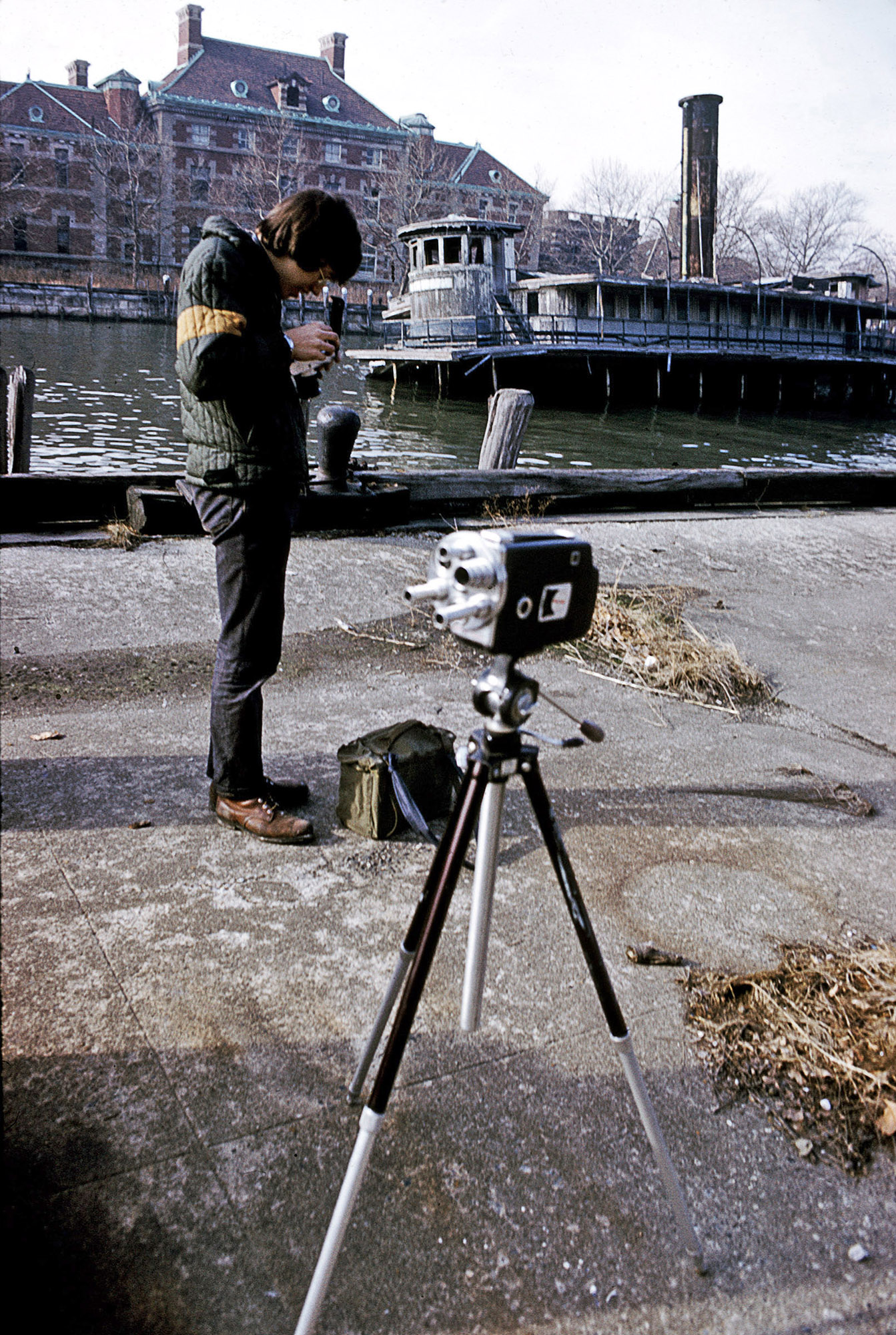 He documented his first modern ruin in 1974: Ellis Island after its heyday as an immigration hub and before its restoration by the National Park Service to welcome tourists. Phil, a high school senior, navigated a small rowboat to the island with a friend to shoot photos and video.
He documented his first modern ruin in 1974: Ellis Island after its heyday as an immigration hub and before its restoration by the National Park Service to welcome tourists. Phil, a high school senior, navigated a small rowboat to the island with a friend to shoot photos and video.
“By then, parts of the city were becoming too valuable to leave undeveloped, but not Ellis Island. It was this mysterious, inaccessible place that spoke to the explorer in me.” To this day, he’s still surprised about the island’s appearance when he first saw it dotted with red brick buildings connected by covered passageways.
“There wasn’t a single broken window, no graffiti. Nobody had been to this island, not even scrappers,” Phil says. “There was still immigration paperwork, bottles, mattresses, beds. Everything really was just left there.”
With his love of reminding the world of forgotten places firmly established, he pursued degrees at Rutgers University, where he majored in art and math, and CMU, which spoke to these seemingly divergent interests. (This same mindset also drew his son, Christopher, to study in the College of Fine Art’s School of Architecture. He graduated in 2013 and is an architect in Austin, Texas.)
Of the approximately 90 people in his MBA courses at Tepper, only two focused on marketing and branding in their careers — Phil and his friend, Kevin Lane Keller, now a Dartmouth University marketing professor.
“I chose CMU because it was the most quantitative business school back then. I still use many of the same tools I learned in statistics — factor analysis, cluster analysis, correspondence analysis,” Phil says. “Market research was always the most interesting part of marketing to me, and at CMU, I mastered pattern recognition and data simplification.”
With this mastery of math-focused marketing angles and an ability for visualizing a campaign’s targeted audience, Phil pioneered new client research concepts. The concepts meshed his right brain and left brain strengths and made abstract concepts like potential customers into clear snapshots — literally — of everyday Americans.
“Because I also was a photographer, I was one of the first to document people in their homes and offices to help bring my strategic stories to life for the writers and art directors creating commercials,” Phil says.
Over the years, he was part of iconic campaigns: AT&T’s “Reach out and touch someone,” Hallmark’s “When you care enough to send the very best,” Kodak’s “Kodak Moments” and others for Apple, American Express, Chase, Kraft, Crayola, Ford, Lincoln and many more.
Along the way, he continued clicking away and developing his own artistic vision.
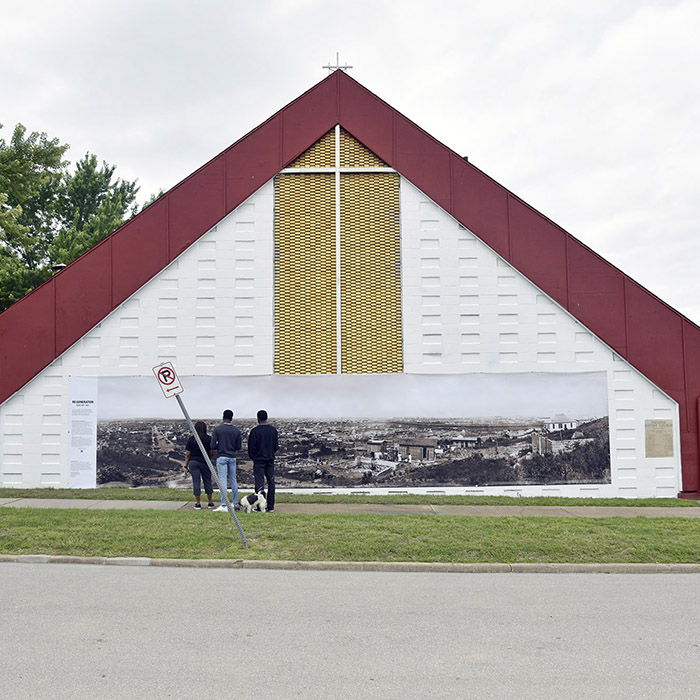

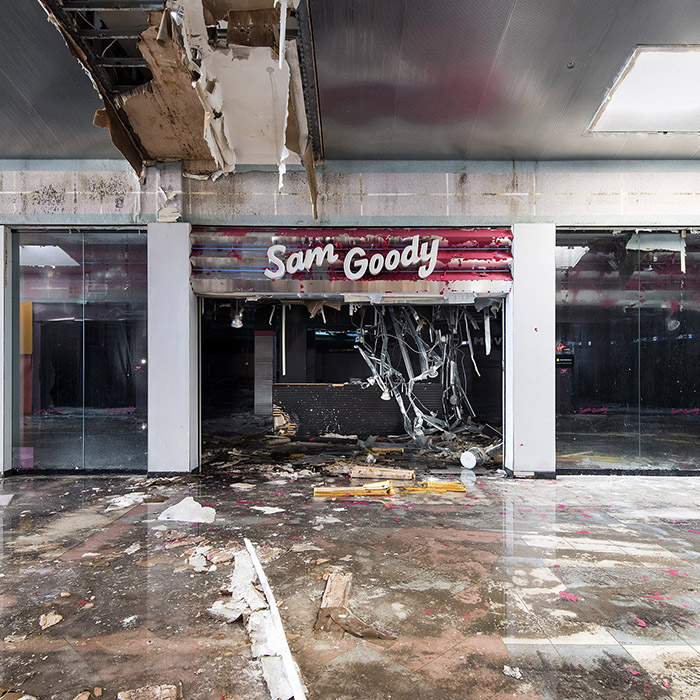
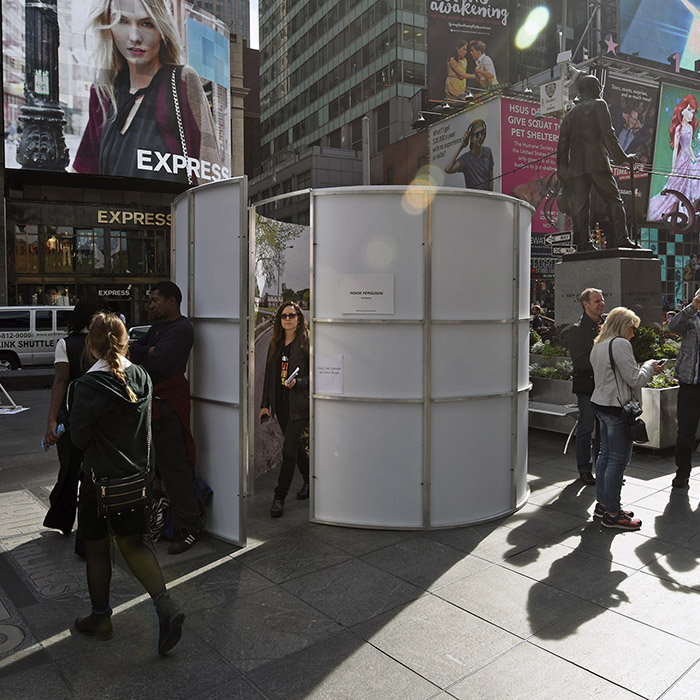
Back in Time
After Ellis Island, he documented countless other modern ruins including the 1964 New York World’s Fair site; S.S. United States, the fastest and largest ocean liner in history; and Greystone Park Psychiatric Hospital in New Jersey where folk singer Woody Guthrie was once a patient suffering from Huntington’s disease. Guthrie became the subject of Phil’s first book.
“I feel a bit like a time traveler, going back in time to rescue something and bring it back to the present,” Phil says. “I usually find some personal connection after I’ve visited places, too. My grandparents came through Ellis Island and sailed on the S.S. United States. I attended the World’s Fair as a child, and I had a cousin who was a patient at the Greystone Park hospital.”
“It’s an opportunity for me to learn about history,” he says, both of a place and his own.
In recent years, he’s pivoted to panoramic cycloramas, sometimes created from thousands of high-resolution photos, that allow viewers to step inside a time and place. Places like Ferguson, Missouri, surrounded by memorials and stuffed animals on the spot where Michael Brown was killed; Arlington National Cemetery at Captain Humayun Khan’s headstone encircled by thousands of gravesites of all religions and ethnicities; a playground in Flint, Michigan, surrounded by plastic water bottles; and the National Mall amidst a sea of pink hats during 2017’s Women’s March.
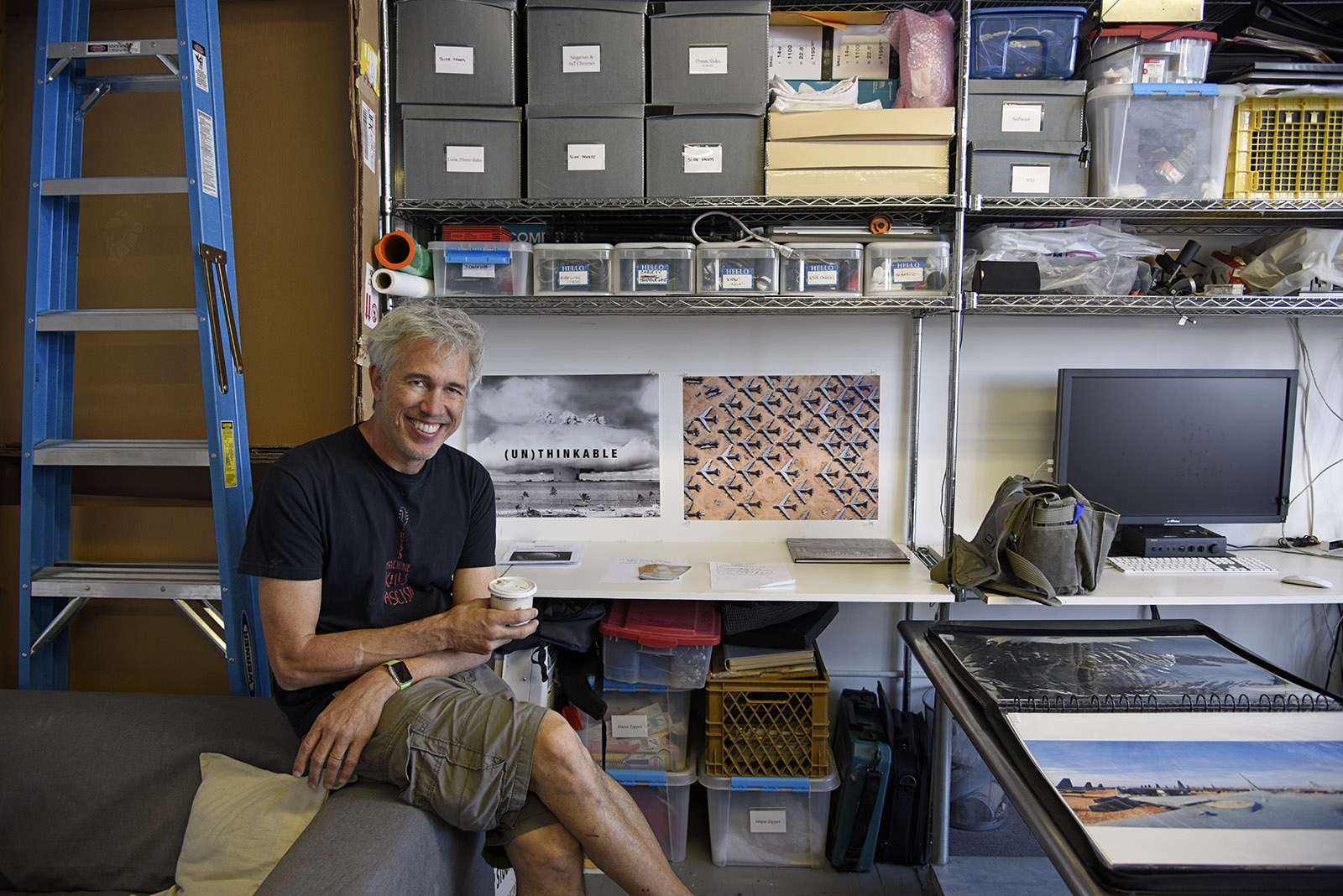 “I try to not put myself in them,” Phil says. “I take photos on these spots. You can see the flowers. You can read the signs. You can see the street, then draw your own conclusions.”
“I try to not put myself in them,” Phil says. “I take photos on these spots. You can see the flowers. You can read the signs. You can see the street, then draw your own conclusions.”
His most recent work “RE-GENERATION Tulsa 1921-2021” features four mural-sized photos mounted on the sides of Paradise Baptist Church, which was burned down during the city’s Race Massacre before being rebuilt.
The seed of the project was planted five years ago when he was in Tulsa on a book tour. He noticed the bronze plaques embedded on the sidewalk that marked the locations of businesses destroyed during the massacre and visited the John Hope Franklin Center for Reconciliation to learn more about the event. In the center, he saw a panoramic photograph of the aftermath taken by the American Red Cross and thought how the image could be transformed into a cyclorama, if he could only find the original or negatives.
In early 2021, he embarked on a deep dive, locating five images in the collections of the Library of Congress, Tulsa Historical Society and Museum and Oklahoma State University. With photos in hand as well as Google Maps and Street View, he identified the original vantage point of the shots, eventually noting a church that rose from the ashes — Paradise Baptist.
The church’s community agreed to display the photos, and Phil installed four panoramic photos, each measuring 8 feet by 35 feet, on its exterior walls. The sheer size of the images aims to hammer the magnitude of destruction.
“I don’t have to add any words,” Phil says. “People can take away what they want. I just let them step back in time as they step closer to each image.”
